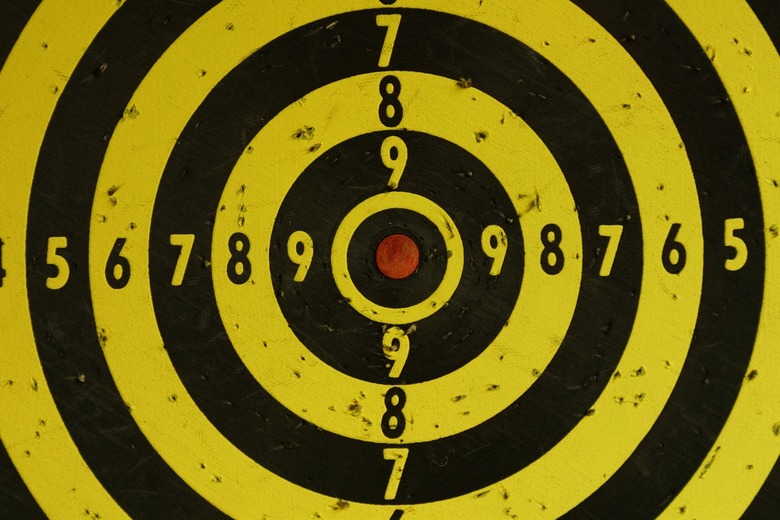How To Calculate Circular Error Of Probability
The circular error of probability refers to the average distance between a target and the terminal end of an object's path of travel. This is a common calculation problem in the shooting sports, where a projectile is launched towards a particular destination. In most cases, the shot will not hit the target when fired multiple times. This anticipated room for error considers the distance of each missed shot from the intended target. Simple calculations can determine the average error for all of the shots. The root mean square is primarily used for this process.
Step 1
Shoot ammunition from the shooting device towards a target. The more shots you fire, the more accurate the calculation will be.
Step 2
Measure the distance that each shot is off target with a ruler. Record these numbers with a pencil and paper.
Step 3
Square each number in the list individually. Multiply each number by itself.
Step 4
Find the average of all the squared numbers by adding all the numbers together and dividing them by how many numbers are listed.
Step 5
Find the square route of the average of all the numbers to determine the circular error of probability.
Things Needed
- Ammunition
- Shooting device
- Target
- Ruler
- Pencil
- Paper
- Calculator (optional)
References
Cite This Article
MLA
Sarah, Kim. "How To Calculate Circular Error Of Probability" sciencing.com, https://www.sciencing.com/calculate-circular-error-probability-8701777/. 24 April 2017.
APA
Sarah, Kim. (2017, April 24). How To Calculate Circular Error Of Probability. sciencing.com. Retrieved from https://www.sciencing.com/calculate-circular-error-probability-8701777/
Chicago
Sarah, Kim. How To Calculate Circular Error Of Probability last modified March 24, 2022. https://www.sciencing.com/calculate-circular-error-probability-8701777/
